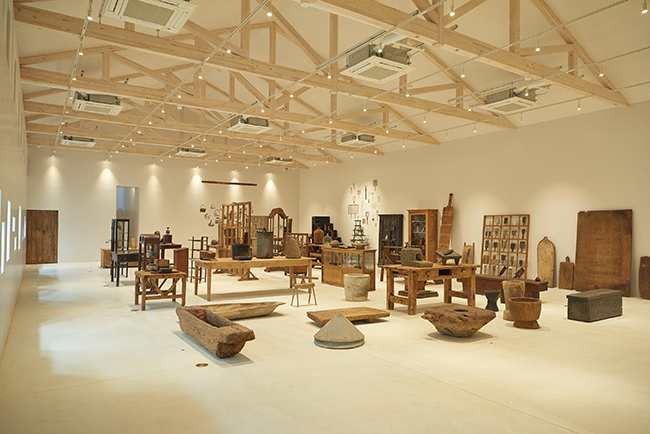Katachi Museum: Uchida Koichi’s Culinary Tools Exhibit
Jul 22,2022
Katachi Museum: Uchida Koichi’s Culinary Tools Exhibit
Jul 22,2022
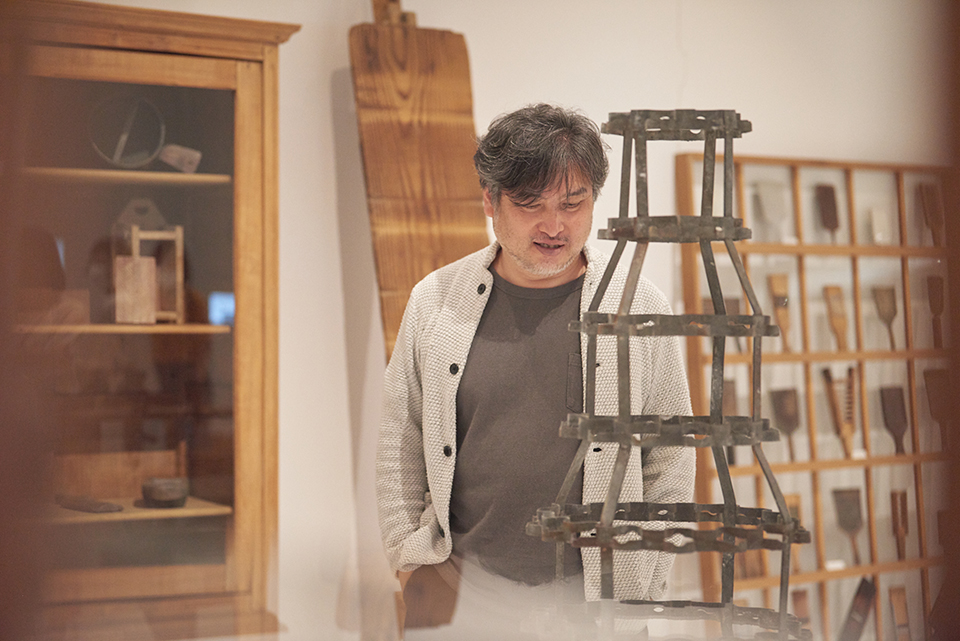

It is well known that shell mounds and earthenware are evidence that humans lived in prehistoric times. Many people likely find it romantic to imagine what people in antiquity ate and how they lived from the traces of implements and eating utensils that remain today.
One eccentric museum that triggers this kind of adult imagination is the KATACHI museum, where Uchida Koichi, a ceramicist and modeler, has collected eating utensils and implements from all over the world.
We spoke with Uchida about the allure of tools and implements whose only commonality is food and his concepts behind the KATACHI museum.
VISON is a commercial complex centered on Japan’s rich food culture. Within VISON’s spacious premises, the KATACHI museum, produced by Uchida, is found in an area called Atelier VISON.
Covered with earthen walls, the building’s exterior stands in stark contrast with VISON’s buildings in other areas that make abundant use of timber, mainly cedar, produced in Mie prefecture. This unusual appearance heightens the visitor’s interest in both the building itself and the items and objects it contains inside.
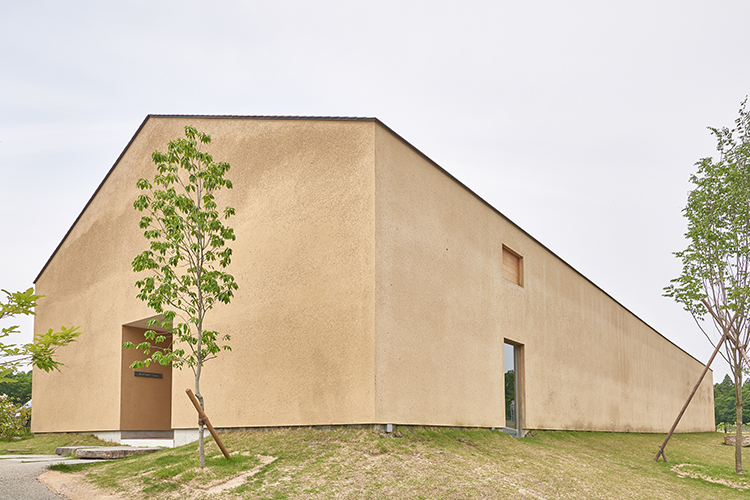
The museum’s seamless earthen walls, which are some of the largest in Japan, were constructed by plasterers who also build structures at the Ise Jingu shrine and other prominent shrines and temples. The building has no seams and no eavestroughs, based on the idea that rainwater seeping into the walls and causing them to decay over the years is itself a type of art.
The vast walls, which remind the visitor of the toil of hand-plastering, have gradually acquired a distinctive patina in the short time since the building’s opening, with continuous exposure to rain, wind, and sunlight.
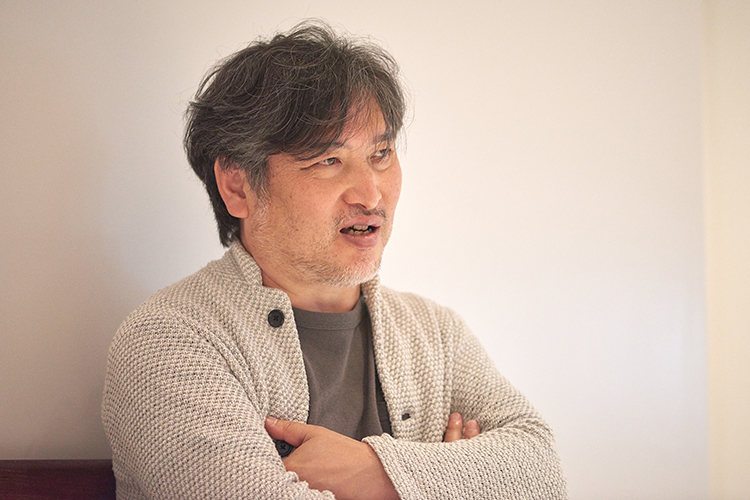
Uchida Koichi, ceramicist and modeler
“The building reflects the changes in the climate and the passage of time and adapts to the land. I hope people will enjoy each of these changes,” says Uchida. The KATACHI museum shares the same aspiration as VISON in that it aims to be a sustainable building that can be re-plastered if it is damaged or peels and thereby continue to exist even as the times change.
The KATACHI museum only exhibits implements related to or associated with food, regardless of what country or region they come from. All of the items are part of Uchida’s valuable collection that he has personally purchased and collected over many years travelling abroad.
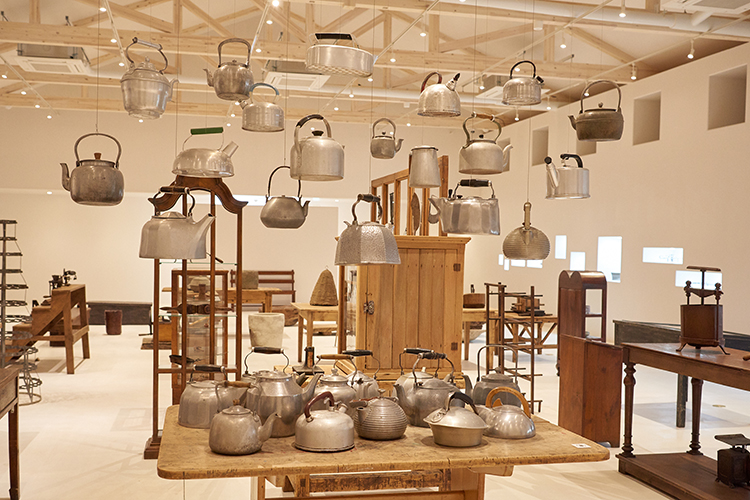
Uchida has previously been involved in starting up the private BANKO archive design museum, whose purpose is to raise the profile of banko-yaki pottery produced in Yokkaichi that he collects.
“I originally wasn’t that interested in banko-yaki. It was only after I picked up some banko-yaki pieces at a local antique market that I recognized how distinctive the pottery is, although it is overshadowed by more well-known pottery types like mino-yaki and seto-yaki. That led me to start up a museum to archive banko-yaki pottery. Besides our permanent exhibit, we hold special exhibitions twice a year.”
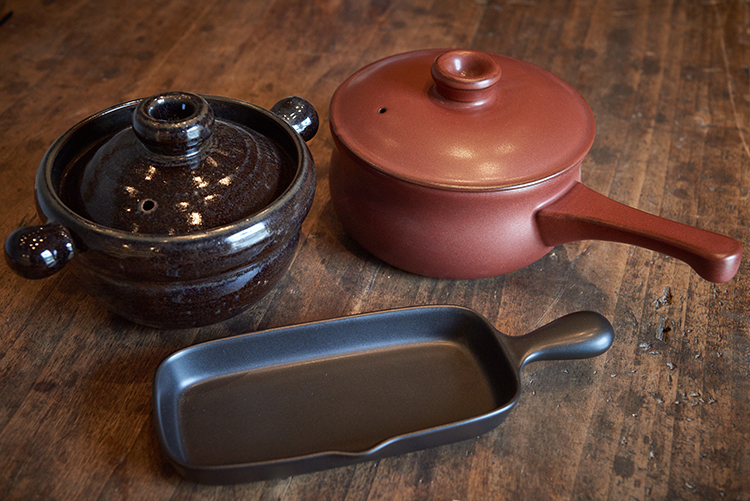
Banko-yaki pottery is now mainly produced in Yokkaichi and Komono in Mie prefecture
One interesting thing about banko-yaki pottery is that it has been used to make items not made by other kilns in a region surrounded by famous kilns. Not only are there plates and bowls with the distinctive banko-yaki coloring, there are more than a few pop pieces as well, such as ceramic kewpie dolls and piggy banks.
“What’s unusual is the kilns, which are normally located deep in the mountains, are in towns near the sea. Much of the pottery was produced specifically to be exported and was designed with an awareness of the Japonisme trend overseas. There seems to be a history of producing lots of dolls and toys since the Meiji period (1868 to 1912).”
It was his many activities like these that led VISON to reach out to Uchida. VISON was weighing the idea of having a cultural facility that would pique visitors’ intellectual curiosity, to prevent VISON, a collection of food-related shops, from becoming just another shopping complex. When Noma, the Copenhagen restaurant known for its fermented food, opened an establishment in Japan, they selected Uchida’s works for some of their tableware. His strong affinity with food was also a reason why VISON contacted him.
“I thought if I’m going to do something at VISON with its food culture theme, then why not a museum featuring only food utensils that I personally collected. I wanted to create a space that gets visitors to imagine how the implements were used and the lives of the people who used them, by exhibiting items from different countries and different eras whose only thing in common is that they are related to food.”
The items Uchida selected with his unique aesthetic sense come in all kinds of shapes, sizes, and market values, and range from very rare items to items he felt an immediate attraction to and bought at flea markets overseas. The museum deliberately does not provide detailed descriptions of the pieces to prevent observers from being bound by preconceptions.
Another way the museum stimulates visitors’ imaginations is exhibiting items in antique cabinets or other displays that showcase the items’ inherent materiality and presence. There is no set path to follow around the museum, so visitors are free to explore the items as they like, led by their own sensibilities, and to think about the life of someone long ago who was behind the items.
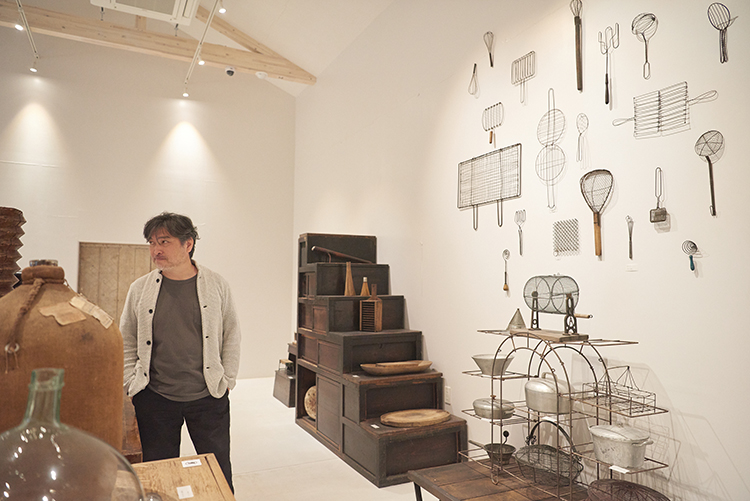
“Even with items that aren’t obvious at a glance, you can imagine how they were used given food as the keyword. I think it’s fun to make new discoveries by changing your frame of reference, such as learning that countries very distant from each other used very similar implements in the same era, or finding implements that have remained essentially unchanged over the ages. As long as there are people, there is food, regardless of the era or country. I’m delighted to see visitors enjoy eating at VISON and then thinking about the background of food at this museum.”
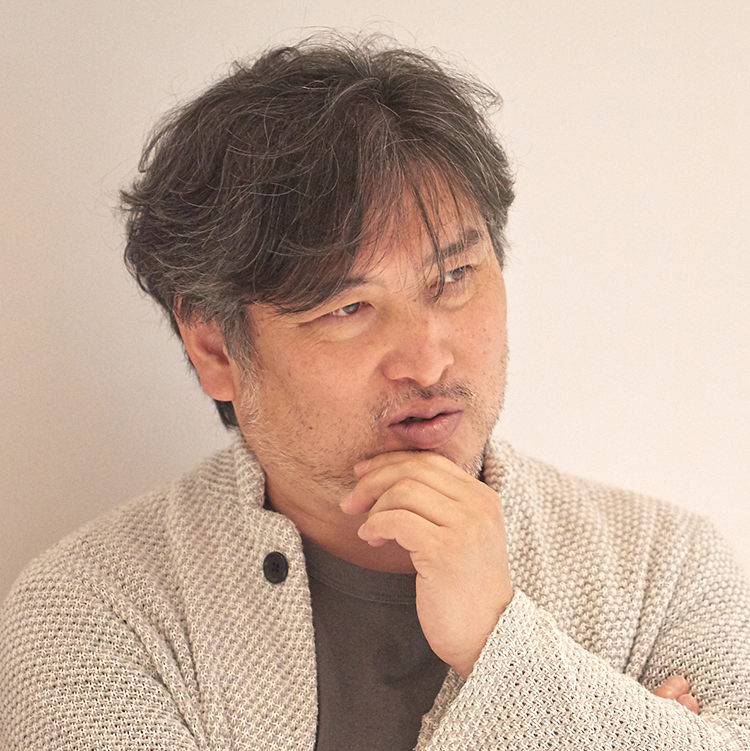
Uchida, born in Aichi in 1969, is a ceramicist and modeler. He traveled around the world to various pottery producing locations, where he created and researched pottery using local clay and kilns. In 1992, he set up his own studio in Yokkaichi, Mie. He established the BANKO archive design museum in 2015.
